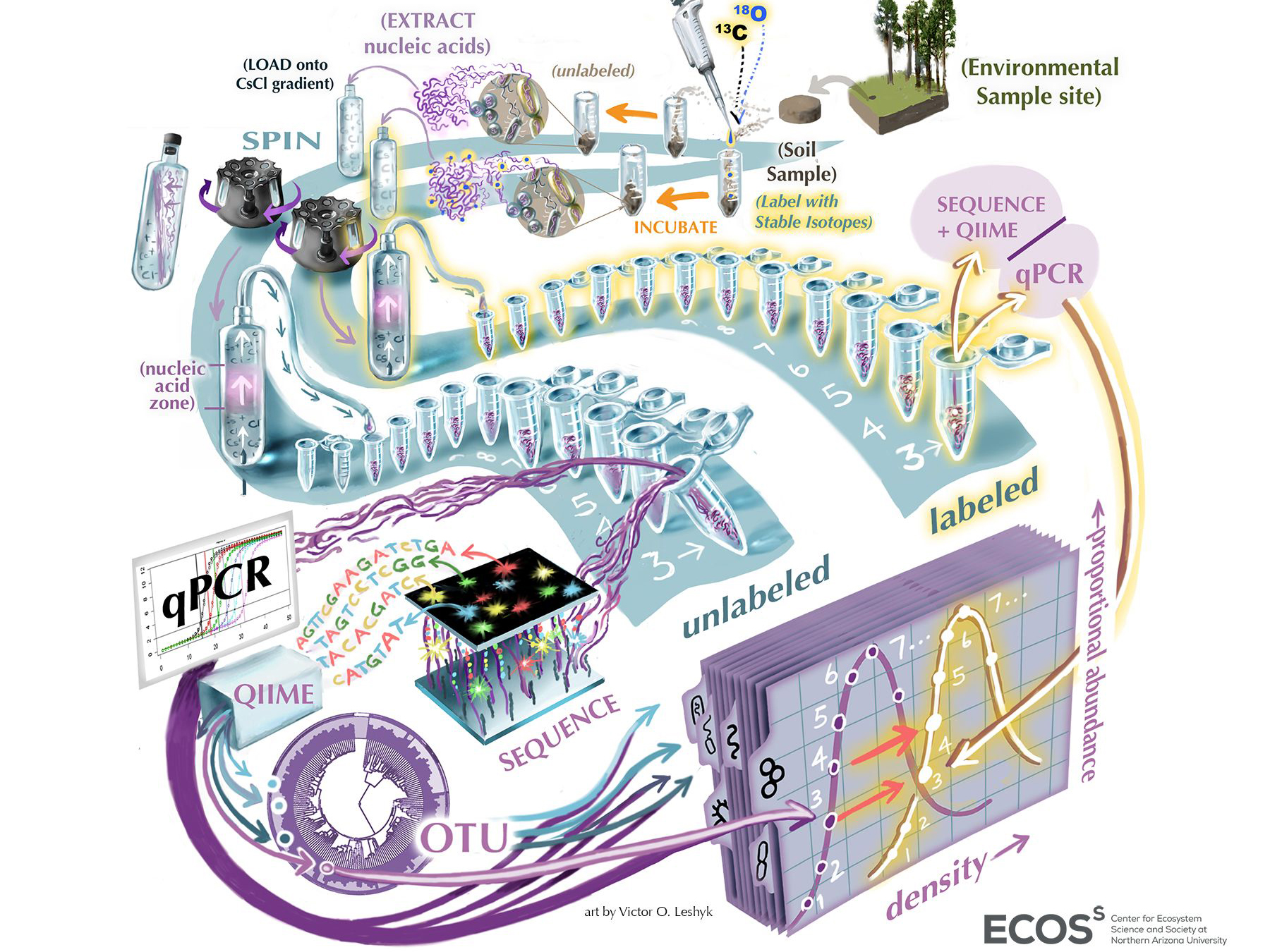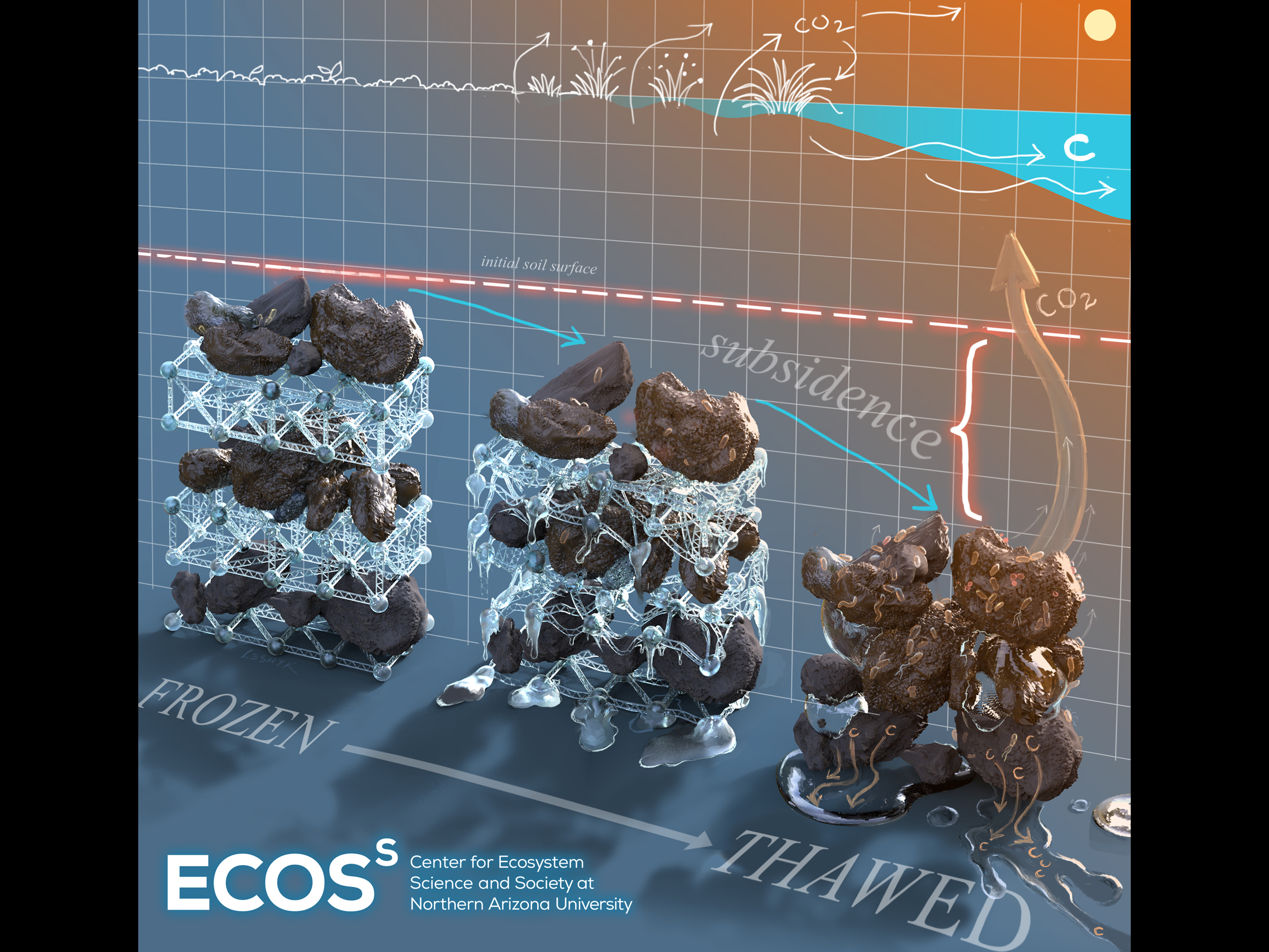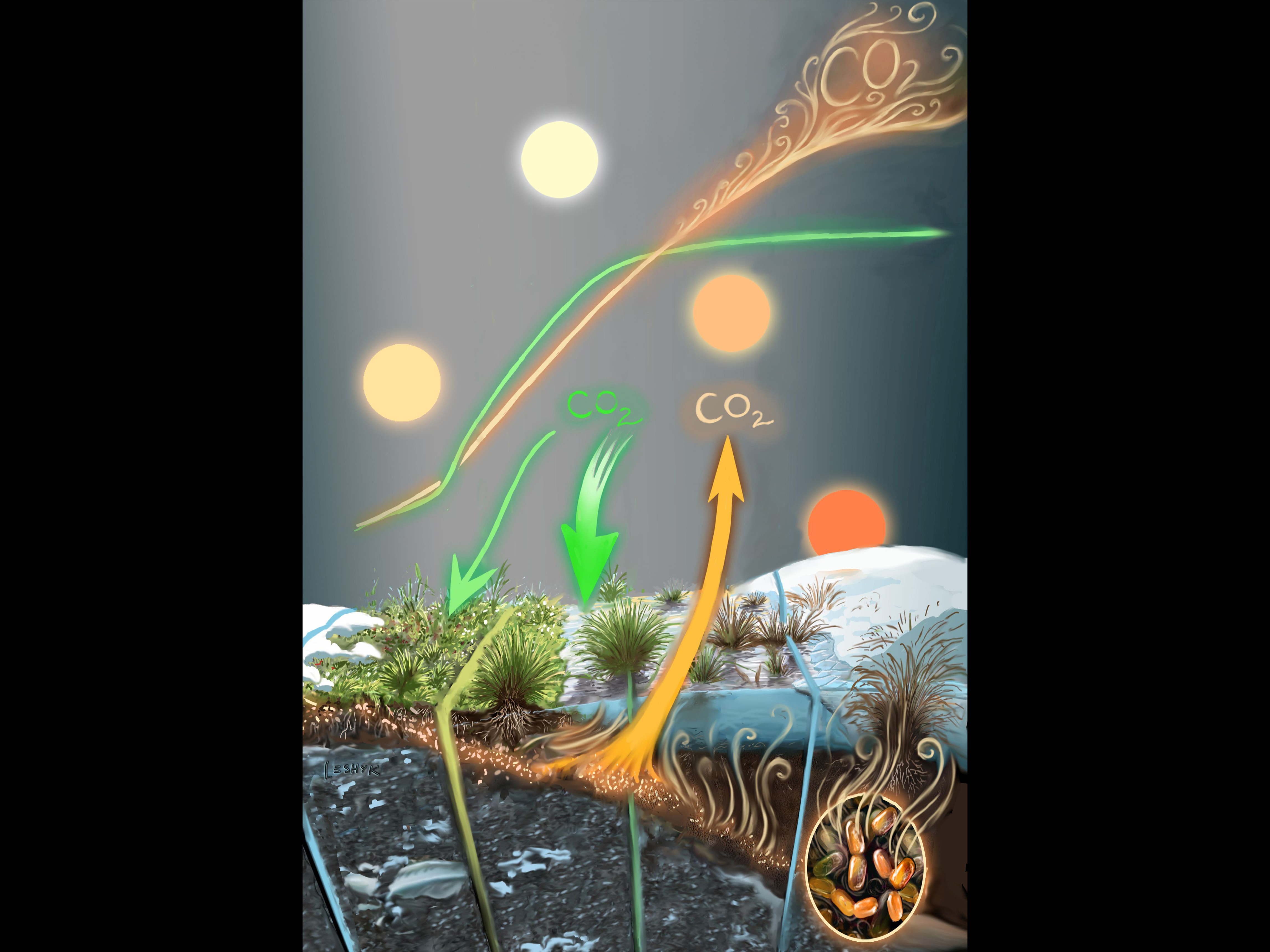Art
The images below are scientific illustrations associated with Ecoss’ results and publications.

Microbes role in a changing world
Working with soils from long-term warming sites in four different climate zones, the Ecoss team will use techniques including NanoSIMS, qSIP, Chip-SIP to measure bacterial growth rates, community RNA enrichment and carbon and nitrogen uptake at the level of the cell.

Carbon from thawing permafrost released to the atmosphere at a higher rate than thought
Ecoss researchers show that more carbon si being released from thawed permafrost than previuosly thought.

Antibiotic resistance
Ecoss members Ben Koch and Bruce Hungate published a study in the journal Frontiers in Ecology and the Environment that examined the potential for merging ecology and genomics to better understand those microbial movements. The published study can be found here: http://onlinelibrary.wiley.com/doi/10/1002/fee.1505/full

Non-linear CO2 flux response to seven years of experimentally induced permafrost thaw
Ecoss research via field warming experiments reveals that recent climate warming can disturb linear trends, as warmer season allow deeper thaws, with the result that soil microbes can remain active through the winter months in deep layers of soils that do not re-freeze.